You know those books…the ones that make you truly want to travel? Memoir, a place-based novel, or guidebooks, we love them all – and are happy to share them here with our Wandering Educators.
Jean Cocteau's walls at Villa Sando Sospir

Germaine Richrer's heroic sculptures at the Picasso Museum, Antibes
Next up is one of my favorite books (and will soon be yours): 100 Places in France Every Woman Should Go, written by Marcia DeSanctis. Once you delve in, it will be one of your favorite books, too. Here’s why…

Marcia DeSanctis in Cap Ferrat

Roman arena in Nimes
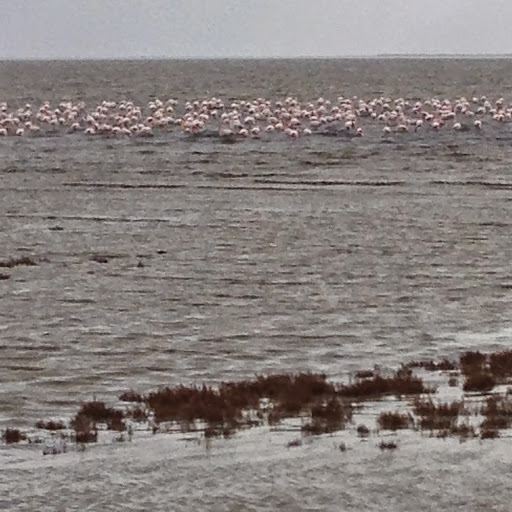
Flamingoes in the Camargue
This book is the perfect, interesting, intelligent travel companion. It’s full of excellent advice, humor, experience, and the kind of information you’d get from talking for hours with your well-traveled best friend who has lived there.

Jambon and hot peppers in Bayonne, Pays Basque

espadrilles, St. Jean de Luz
100 Places in France Every Woman Should Go covers not only where we want to go (hello, Paris!), but also where we should go to discover the other side of France (it is true – think France and you think Paris. But there’s so much more to the country than the capital). From historical women and historical places (love) to small towns, getting outdoors, shopping, and food and wine, this book will fill your travel plans for years. Each chapter made me want to take a multi-year sabbatical to France, to follow in DeSanctis’ footsteps.
Ile St. Honorat
Places you’ll want to visit after reading this book include:
- Paris (many, many)
- Antibes
- The Camargue, Languedoc-Rousillon
- Cannes
- Aquitaine
- Arles
- Lake Annecy
- Bordeaux
- The Dordogne
- Lyon
- Ok. Let's be honest. Basically, all of France.

Eleanor's Palais de Justice, Poitiers

Nearly abandoned beaches on the Atlantic Coast
Here’s why – the writing is beautiful, persuasive; DeSanctis is an artist with a paintbrush, coloring in the essence of France for us.
The Red City of Toulouse-Lautrec
Some cities come alive by night, but Albi needs to be savored in the daylight hours when, depending on the position of the sun and the time of year, it smolders, explodes, or simply luxuriates in its rose-hued glory.
The Green Muse, Absinthe Bar, Antibes
The bar is cocooned underneath a storefront next to the market’s busy thrum. It is a dizzying setting for this museum-like hideaway, which celebrates one of the world’s headiest spirits. There is a slight whiff of tourist-treaded steps, but lower your nose, dear reader, and revel in the history.
On the Michelin stars
Fair enough. Let’s buy into this system, however flawed, for the sake of pleasure. There is artistry, even genius, behind these single, 2 or 3 stars. In this rarified universe, these chefs have made the cut. So seek one out. Put on your best dress. Go ahead and eat. Use the salad fork. Order the good wine, and drink it all. If food is memory and memory is destiny, then you could make the case that food is destiny, and nowhere more so than in France. This meal may be what lingers most enduringly in the hidden reaches of your mind. A table littered with wine glasses, the remnants of dessert, and you, utterly satiated.
Typical Parisian still life
What jets this travel guide to the top? Intimate knowledge of extremely interesting things to see and do. George Sand’s house in Nohant. The first city of Chocolate (yes, please): Bayonne, Pays Basque. The greatest flea on earth, in Lille. Picasso, flowers, wine, language, food, silk, history, hiking, water everywhere, gardens, Christian Dior, cheese, and ending with Everything You Dream Of (Where is this, you may ask? No spoilers here…).

Caneles in Bordeaux

Cooking school at Hotel St. James, Bouliac
Reading this book will illuminate France for you, educate you on customs, cultures, places, history, and important women. It brings your senses to high alert, and lets you revel in the joy of learning about something new, and being inspired along the way.
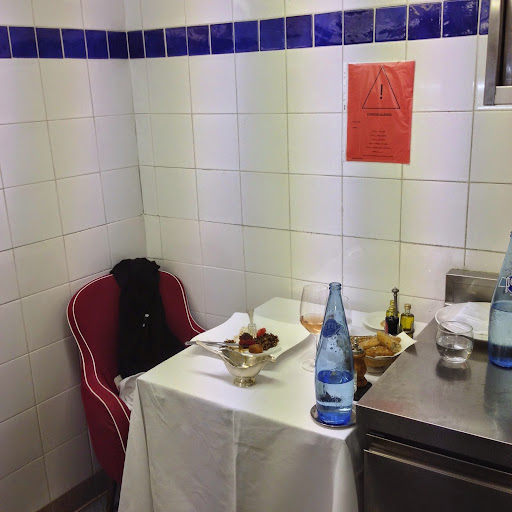
Table for one, in the kitchen at the chefs, Mougins
We were lucky enough to catch up with DeSanctis, and ask about her book, inspiration, research, and more. Here’s what she had to say…
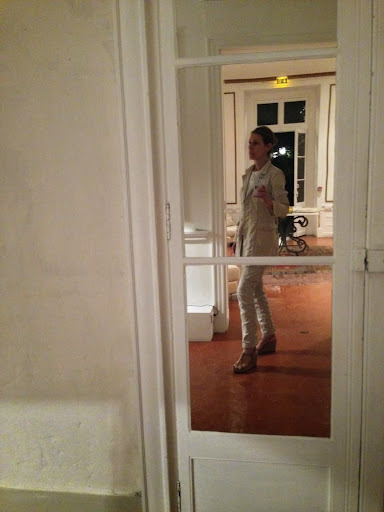
Marcia DeSanctis in the lobby of L'Hotel Particulier, Arles
Please tell us about your book, 100 Places in France Every Woman Should Go...
Hi Jessie! First of all, thank you for your enthusiasm and generosity not only to me, but to so many writers.
My book has the title of a guidebook, but it’s not that, not exactly. The New York Times described it as “essays on where to go in France and why”. That was spot-on. It’s a book of stories about place with quite a bit of travel advice mixed in. #1, for the record: really try to avoid France in August.
It seems prudent to answer this question with some explanation of my methodology. It’s not a list of the most important cultural attractions in France, but certainly many places in the book would qualify. Nor is it only about girly tropes of champagne and perfume and chocolate (though all three are well represented!). I had to choose 100 places (or in some cases, experiences) about which I could do some deep writing, and hopefully, in the spirit of France, do it with a light hand, that integrates history with lots of descriptive detail. And above all, this is just a subjective list – as with most lists, there is no science in it. It is 100 suggestions from someone with a long-term love and connection with France. Many people will disagree with some of my choices and I encourage that!
What I chose to include had to fit one of several criteria. First, is there a story of a great woman in history around which I could frame the piece? An example of that is the chapter on Château de Grignan, a place that is enmeshed in the history of Madame de Sevigné, one of France’s great writers, who has a pretty remarkable story herself. Second, is it something so beautiful that it causes our hearts to stop and knees to weaken? The chapter on three stunning hikes in Provence is an example of this, as is Château Vaux le Vicomte. Third, is it a place with a strong personal affinity for me, such as St. Tropez, from which I can cull memories but is also deeply, poetically, femininely French? Fourth, is it an experience so iconic that it had to be included – something like shopping for lingerie in Paris, celebrating Bastille Day on the Champs Elysées or splurging on a Michelin-starred meal? Last, was it a place about which another woman, usually a friend, could tell a powerful story better than I could? I’m a reporter at heart, and interviewed over 100 people for this book. My friend Melora, for example, knows the area called Queyras in the Alpes-Maritimes so well that it was clear I needed to include her take.

Favorite Parisian florist

Hidden beach on the Ile d'Aix
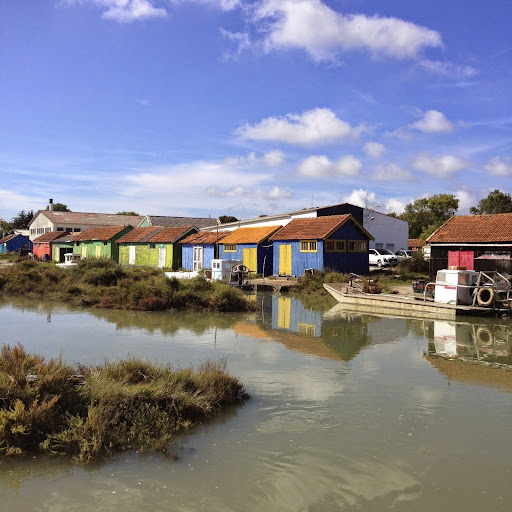
Oyster shacks on the Atlantic coast
What was your inspiration for writing this book?
This book was an opportunity for me to crystallize lots of profound feelings for a country I know very well, a country that changed me. To put down on paper, in effect, all that I loved in France’s geographical and historical diversity, while trying to impart some wisdom and bon mots about traveling there. Not just where to shop in Paris, but why. Not just my recommendation to snorkel on Porquerolles, but why. Everything in travel can conspire to enlighten -– the architecture of devotion, the majesty of green spaces. I try to convey my awe without saying “Wow!” I try to say, here is the bigger story. Sure you should go to that pretty lighthouse off the coast of Brittany. But when you’re there, try to decipher the metaphoric possibilities of a giant structure whose purpose is to help mortals weather storms. They are overpowering.
Most inspiring was the country’s rich history of powerful, brilliant women, and having the chance to unpack some thoughts about why we should care about them and the places where their memories endure. Catherine de Medicis, Joan of Arc, Colette, George Sand, the painter Elisabeth Vigée le Brun, the poet Louise Labé, Marie Curie. These women are giants. Eleanor of Aquitaine. There was never a woman with her stature and grace, and there probably never will be. And their memories are still so vibrant. Much to my surprise, it’s possible to feel amazingly close to a long-departed queen when you are standing in her castle.
I was also motivated by the challenge of trying to create a sort of hybrid travel writing genre. To take the country I lived in, worked in, was married in, and which I love, and try to combine memoir and narrative with advice, and hopefully, to carry the reader along with me on this journey. My goal was to attempt to forge some fresh language (in fact, tacked up on my wall, I kept a running list of words and expressions I wanted to avoid. No to “hidden gem”, “verdant”, “ooh la la” and “city of light”). Of course, I was not always successful. In my first draft, it turns out I had used the word “glorious” twenty-four times. “Splendid”, I think even more than that. In spite of my own tendency toward word overkill, I was quite inspired by this quest: to convey my love for France and even its inescapable clichés – moonlight walk on the Seine anyone? – and to do so in a respectful and hopefully original way.

Karine and Emmanuelle, surf goddesses of the Cote Basque
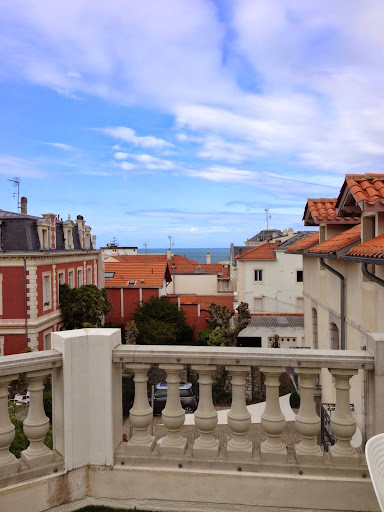
Rooftops of Biarritz

Hospices de Beaune, Burgundy
I'm all about the research - what was it like, researching your book? What surprised you the most?
You and I have that in common. I could have researched this book for the rest of my life! It was often nearly impossible to stop gathering and start writing. And then there were the road trips, four in all, and of course as a traveler it’s always bittersweet to pack up and go home, especially when on deadline. Back at my desk, I immersed myself in Napoleon and Josephine’s letters, and those of Abigail Adams, which she wrote when her husband John was stationed as a diplomat in Paris. She was quite perceptive about French society, and I loved her outsider’s vantage point. I finally read the autobiographies of MFK Fisher, Simone de Beauvoir, and George Sand – the latter who, for having written 200 years ago, was a refreshingly contemporary writer, specially her musings about men and relationships. I got caught up in my own little love affair with the non-fiction writing of Colette. Many of her works are assembled in the collection Earthly Paradise. She is my new inspiration, such an evocative wordsmith who is able to see ten things at once, ten more from the corner of her eye, with ten different textures and ten different colors.
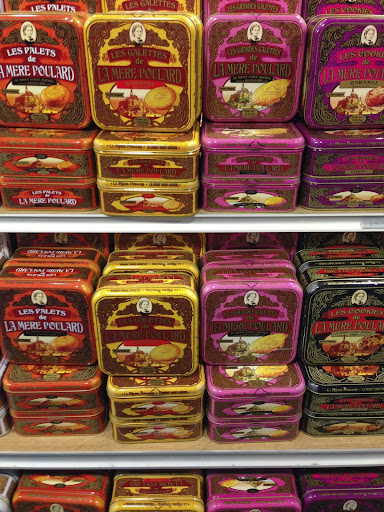
Biscuits for sale at Mont St Michel
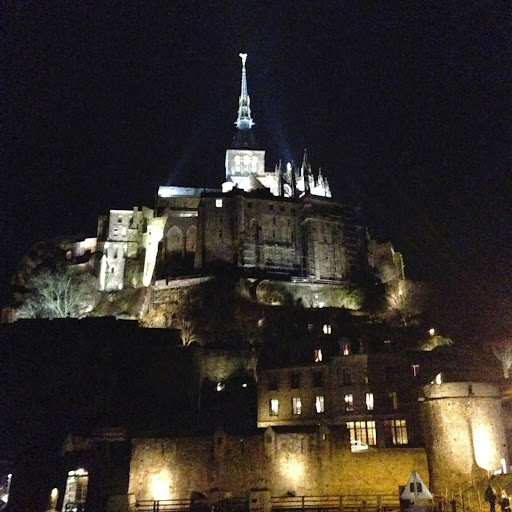
Mont St Michel at night
Did you uncover anything unexpected, while researching and writing this book?
Yes! Too, too much. The more that was revealed to me in fact, the more difficult it was to narrow down my list. Especially when I went on research trips – to the Basque country, which I was less familiar with and is now an obsession, and to beautiful Nîmes, which was a revelation. I loved the islands off the Atlantic coast, and incredibly, I never knew about the huge role of women, who made Lyon the gastronomy capital of France. I was surprised to discover the incredible cooking classes run by expats throughout France. I could spend the rest of my life just bouncing from Lucy Vanel in Lyon to Susan Herrmann Loomis in Normandy and elsewhere – I admire (and okay, envy a little) their lives and talents.
There were events, episodes, places and people in France that had heretofore completely eluded me. I was stunned to learn about the arrest and deportation to Auschwitz of the children of Izieu, one of the great tragedies of the holocaust, in an era defined by tragedy. You can visit the home where they were sheltered, about an hour east of Lyon, that is all the more shattering for it’s bucolic, serene setting.
I learned (and wrote) about the connection between Chamonix and Mary Shelley, who based a key scene in Frankenstein there. I was surprised to learn that Catherine de Medicis was in all likelihood not a poisoner after all, and deserves the credit for bringing perfume to France. Most of all, Joan of Arc was a constant source of astonishment, especially the fact that Mark Twain devoted 12 years of his life to researching and writing a biography of her, and he considers that book – Confessions of Joan of Arc – to be his finest work. I always slightly doubted the veracity of her story. I’m not sure why, other than it is so outlandish. But once I read the minutes of her trial in Rouen, I no longer had any doubts. Just sheer admiration and awe.

Joan of Arc, Poitiers

Joan of Arc, Reims

le Maison des Enfants d'Izieu

Morning walk in St Malo
One of the things I love most about this book is how you cover So many topics! What was it like, to be a renaissance researcher and writer?!
Thank you, Jessie. That’s one way to put it. The other is that perhaps I glossed over way too much! Scholars spend their whole lives writing about some of these places and people I devote all of 1200 words to. But I’m a journalist, so the condensed format somehow suited me. Self-editing has not always been my strong suit, and this was good training. I always had piles of books I was carting to and from the library. What was especially fun in writing this book was the opportunity to remember and reminisce about my many years in France, and use that as the foundation for a broader look. Maybe scaffolding is a better word. Sure, I’ve visited Versailles many times, so I could talk about that, how I fainted in the Hall of Mirrors, etc. But I never put those visits in the context of Marie Antoinette, and why she continues to fascinate us. It has little to do with her diamonds and wigs, and more to do with her ultimate victimhood. Yes, the monarchy deserved to be toppled, but she never chose any of it for herself. These are big, big themes and ones all of us can relate to.

Empress Josephine's bed, Malmaison
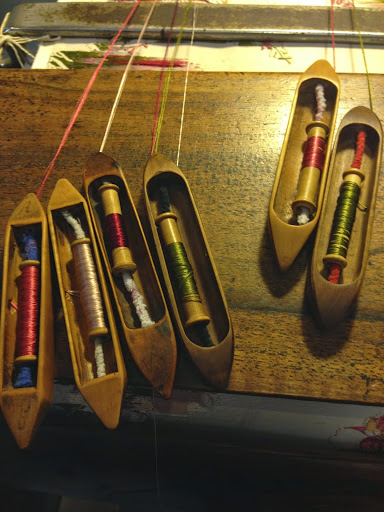
Silk making in Lyon

Author outside the Grand Vefour, where she was married
What's up next for you?
I’m still out promoting the book, and finally beginning a bigger, more comprehensive work about women and travel. It’s quite a big topic – don’t you agree?
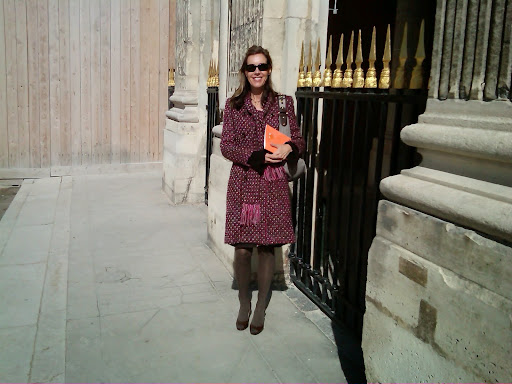
Author at the Palais Royal
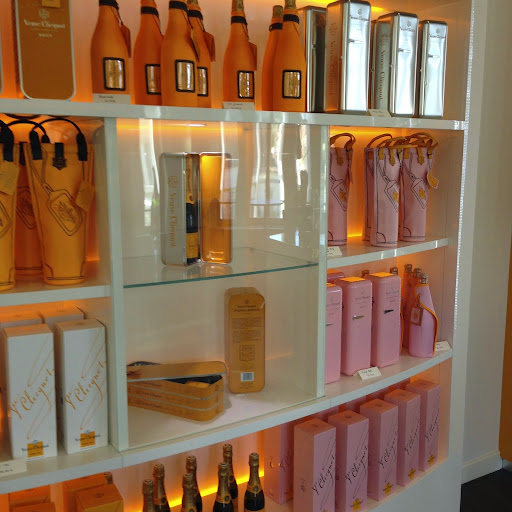
Shopping at Veuve Cliquot, Reims
Learn more: www.MarciaDeSanctis.com
Note: we love these 100 places for Women books – read our interview with Sophia Dembling, author of 100 Places in the US Every Woman Should Go
All photos courtesy and copyright Marcia DeSanctis
We received a review copy of this book from the publisher - thank you!
